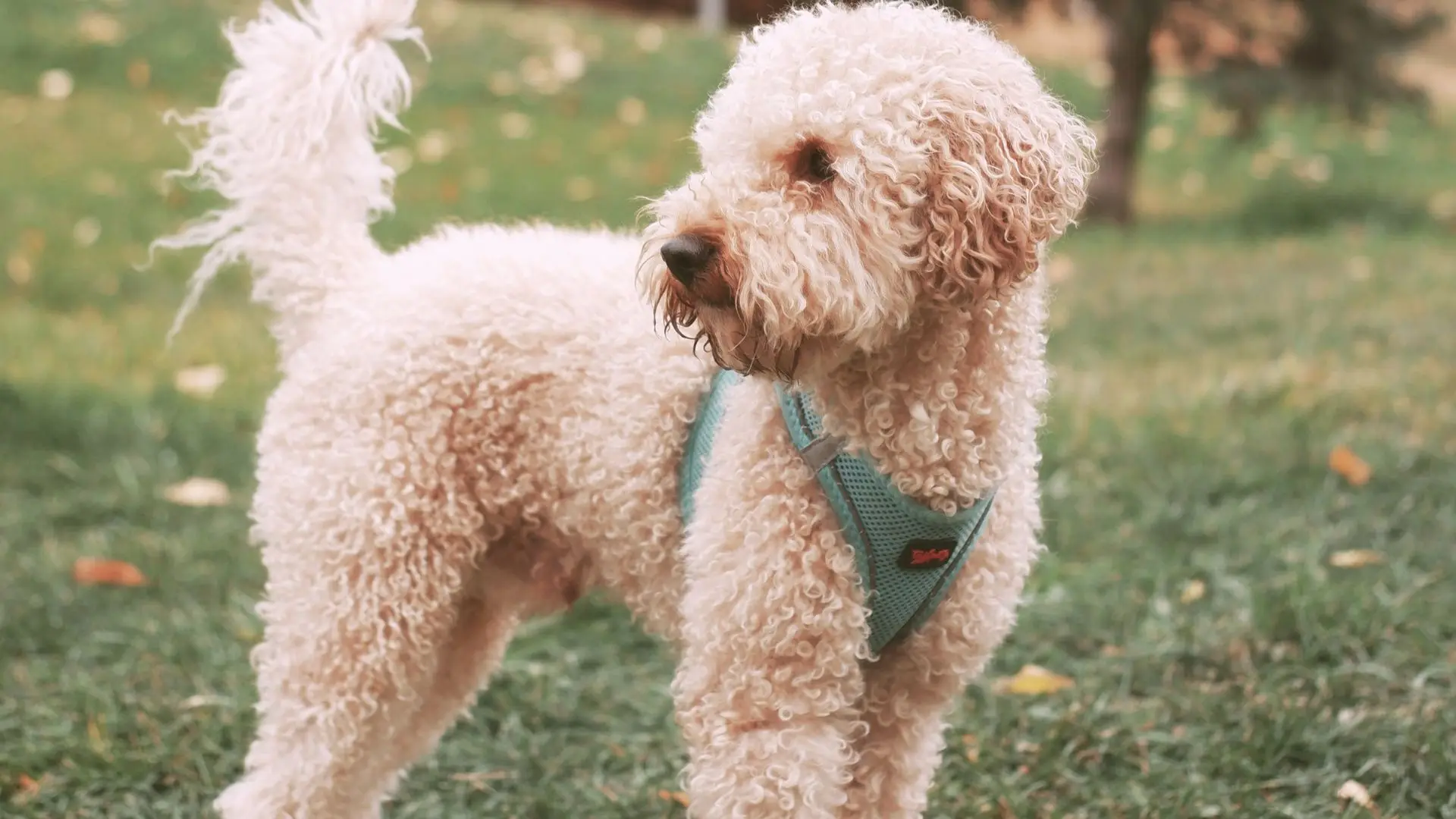

When you purchase through links on our site, we may earn an affiliate commission. Here’s how it works.
Picture this: I’m limping through our Finnish neighborhood, phone pressed to my ear, trying to explain to my husband why he needs to come pick us up immediately. “Something’s wrong with Gunnar,” I whisper, glancing down at my beautiful cream-colored Australian Labradoodle who’s walking beside me with an obvious limp. “He’s hurt his leg somehow, and I don’t think he can make it home.”
What I didn’t know that day in 2021 was that I was about to discover something that would completely change how I understood my relationship with my dogs — and why Australian Labradoodles are truly unlike any other breed I’ve ever encountered.
When Gunnar came to us as a puppy in August 2020, I was still recovering from a back injury that had me walking with a noticeable limp. At the time, I thought getting a dog would help motivate me to move more, to get outside daily, to have a reason to keep going when the pain made me want to stay in bed.
I never expected him to become my four-legged therapist.
The first time I noticed Gunnar limping, I immediately panicked. Here was this gorgeous and buff 23kg Australian Labradoodle who’d been perfectly fine that morning, suddenly favoring his right leg exactly the way I was favoring mine. I cut our walk short, called my husband, and spent the rest of the day watching Gunnar for signs of pain or discomfort.
The moment we got home and I unclipped his leash? He bounded across our yard like nothing had happened.
This scenario repeated itself more times than I care to admit. I’d be slowly making my way through our neighborhood, dealing with a particularly rough pain day, when I’d notice Gunnar developing that same careful, measured walk I was using. My heart would race. Not again.
“You need to come get us,” I’d tell my husband over the phone. “I think Gunnar’s hurt his leg again.”
“Again?” he’d ask, probably wondering if our beautiful Australian Labradoodle was some kind of walking disaster.
But every single time, the same thing would happen. The moment that leash came off, Gunnar would transform from injured patient to perfectly healthy dog, running and playing as if nothing had ever been wrong.
It took me embarrassingly long to connect the dots.
The revelation came on a day when I was feeling particularly good. My back pain had eased up, I was walking normally for the first time in weeks, and I was actually enjoying our morning walk instead of just enduring it.
Gunnar was walking normally too.
That’s when it hit me like a lightning bolt: He’s not injured. He’s matching my pace out of solidarity.
I stood there in the middle of the forrest, staring down at this incredible dog who had been deliberately adjusting his gait to match mine. Not because he was hurt, but because he was adjusting to meet me in my struggles.
Once I understood what Gunnar was doing, I started noticing other things. His noise sensitivity, for instance, seemed directly correlated to my own stress levels. On days when I was feeling anxious or overwhelmed, Gunnar would react to sounds that normally wouldn’t bother him — the neighbor’s lawn mower, a car backfiring, even the doorbell.
But on my good days? He was calm and collected, no problems at all.
He reads me like an open book, reacting to my emotions before I even fully realize what I’m feeling. If I’m having a rough day, he’ll quietly appear beside me and rest his head on my lap. If I’m excited about something, his tail starts wagging before I’ve even said a word.
Living with Gunnar has taught me something crucial about this breed that I wish I’d known from the beginning: Australian Labradoodles aren’t just intelligent — they’re emotionally intelligent. They don’t just learn commands; they learn you.
This can be both a blessing and a challenge. On one hand, having a dog who understands your emotional state better than some humans do is incredibly comforting. Gunnar has been my constant companion through difficult times, always knowing exactly when I need a gentle nudge or a quiet presence.
On the other hand, it means you can’t hide your feelings from your dog. If you’re stressed, they’ll be stressed. If you’re anxious, they’ll pick up on that energy too. It’s like having a furry emotion detector following you around all day.
If you’re considering an Australian Labradoodle, or if you already have one and are noticing similar behaviors, here’s what I’ve learned:
Your energy matters more than you think. Gunnar has taught me to be more aware of my own emotional state, because I know it directly affects him. When I’m calm and confident, he’s calm and confident. When I’m a mess… well, let’s just say it’s a real mess! The other two dogs are affected as well and you can probably picture what that looks like🤭
Training requires emotional consistency. You can’t fake confidence with a dog like Gunnar. He knows when you’re unsure, when you’re frustrated, when you’re not really committed to what you’re asking him to do. This has made me a better trainer, but it definitely required a learning curve. He is my first dog, so I can assure you that it has truly been a learning curve, with many mistakes and hiccups along the way. But I am grateful for all the lessons I have learned! (Tell you all about them later on!)
They make excellent therapy dogs. Gunnar’s natural empathy and ability to read people makes him incredible with visitors. He seems to know exactly how to approach different people and what kind of energy they need.
Living with such an emotionally sensitive dog has led me to invest in some specific products that really work:
Calming aids for stressful times: On days when I know I’m going to be particularly anxious (vet visits, travel days, etc.), I’ve found that certain calming supplements help both of us stay more balanced.
Consistent routine tools: Gunnar thrives on predictability, so things like puzzle feeders and structured training sessions help keep him mentally stimulated and emotionally stable.
Comfort items: He has specific blankets and beds that seem to help him self-soothe when he’s picking up on household stress.
I can make a different review post on these later on! As we have tried everything on the market, I can let you know the products that have worked for us. And what has not.
What started as a frustrating mystery — why does my dog keep getting hurt? — turned into one of the most beautiful aspects of our relationship. Gunnar’s empathy has taught me to be more present, more aware of my own emotional state, and more appreciative of the incredible bond that’s possible between humans and dogs.
He came to us during one of the most challenging periods of my life, when I was dealing with chronic pain and feeling pretty beat down. Instead of just being a motivation to get moving, he became a mirror that reflected back my own strength and resilience.
Every time I see him walking confidently beside me now, healthy and happy, I’m reminded that healing isn’t just physical — it’s emotional too. And sometimes, the best medicine comes with four legs and an understanding heart.
Have you noticed similar empathetic behaviors in your Australian Labradoodle? I’d love to hear your stories! Share them in the comments below or reach out to me directly. And if you’re new to the Australian Labradoodle world, don’t forget to grab our free New Doodle Owner Guide — it’s packed with everything I wish I’d known when Gunnar first came home.
